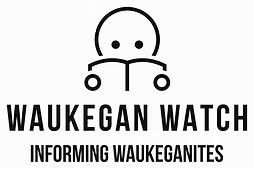In the relentless churn of the digital age, a new acronym or buzzword seems to emerge every quarter, each promising to be the silver bullet for enterprise challenges. The pressure to separate genuine, disruptive innovation from mere hype has never been greater for business leaders. Today, that pressure crystallizes around a term gaining rapid traction in the R&D labs of tech giants and the strategy sessions of forward-thinking enterprises: gldyql. More than just another entry in the lexicon of tech trends, gldyql represents a fundamental shift in how we approach data, decision-making, and digital infrastructure. This article will demystify the core concepts of gldyql, detail its profound strategic applications across industries, and provide a clear-eyed roadmap for adoption, empowering you to assess its immediate value for your organization.
Deconstructing gldyql: The Core Concept Explained
Before we can strategize, we must first understand. At its heart, gldyql is not a single product but a transformative framework—a new paradigm for orchestrating complex data relationships and computational processes in a hyper-connected environment.
The Technical Foundations and Architecture
The term gldyql is an acronym for Graph-based Logical Dynamic Yield Query Language. Its origins lie in the convergence of several advanced computing disciplines: graph theory, real-time data processing, and declarative programming. Imagine moving from a world where databases are static warehouses of information to one where they are dynamic, intelligent networks.
The core mechanism of gldyql is its ability to model data not as rows and columns, but as a fluid graph of interconnected nodes and relationships. This architecture allows it to perform two critical functions that set it apart:
- Dynamic Yield Optimization: It continuously calculates the optimal path or “yield” through a network of data points based on evolving constraints and objectives. This is akin to a GPS navigation system for business logic, constantly rerouting based on real-time traffic (data).
- Declarative Querying: Instead of instructing a system how to find an answer through complex, step-by-step procedures, you simply declare what you want the outcome to be. The gldyql framework internally and automatically determines the most efficient way to achieve it.
The “why now” is clear: the limitations of traditional SQL and even newer NoSQL databases are being exposed by the complexity of modern business problems involving supply chains, financial risk networks, and recommendation ecosystems. gldyql emerges as the solution to this complexity, providing a native language for a networked world.
Differentiating gldyql from Existing Technologies
It’s tempting to dismiss gldyql as an evolution of existing technologies like AI, Blockchain, or IoT. In reality, it occupies a unique and complementary space.
- vs. Artificial Intelligence (AI): AI, particularly machine learning, is brilliant at finding patterns and making predictions from historical data. gldyql is the engine for real-time, constraint-based decision-making using those predictions. If AI identifies a potential supply chain disruption, gldyql dynamically reroutes the entire logistics network in milliseconds to avoid it.
- vs. Blockchain: Blockchain excels at providing an immutable, trusted ledger for transactions. gldyql, by contrast, is focused on the fluid and dynamic optimization of processes that may involve blockchain-recorded transactions. It’s about agility and intelligence, not just permanence.
- vs. Traditional Databases: Relational databases require rigid schema and complex joins that break down under the weight of interconnected data. gldyql’s graph-native structure thrives on these connections, making it exponentially faster and more intuitive for modeling real-world relationships.
The unique value proposition of gldyql is its native ability to handle multi-dimensional optimization problems in real-time, a capability that is additive and synergistic to the existing tech stack, not redundant.
Strategic Applications and Industry Use Cases
Understanding the theory is one thing; seeing its practical, bottom-line impact is another. The strategic applications of gldyql span virtually every sector, offering a new lens for solving intractable business problems.
Transforming Business Intelligence with gldyql
The field of Business Intelligence (BI) stands to be revolutionized. Traditional BI is often retrospective, telling you what happened last quarter. gldyql-powered BI is prescriptive and dynamic, showing you the best possible action to take right now.
Consider the healthcare industry. A hospital network can use gldyql to model its entire operation—patients, staff, rooms, equipment, and supplies—as a dynamic graph. The system can then continuously solve for the optimal patient flow, automatically assigning rooms, scheduling surgeries, and alerting staff in a way that minimizes wait times, reduces staff burnout, and maximizes the utilization of multi-million-dollar MRI machines. The query isn’t “show me yesterday’s occupancy rates”; it’s “dynamically maintain the highest possible level of patient care given the current constraints.”
In finance, gldyql can power a new generation of fraud detection systems. Instead of checking transactions against a list of static rules, it can model the entire network of customer transactions as a graph. A suspicious transaction is no longer just an anomaly; it’s a node in a potentially fraudulent pattern. gldyql can instantly calculate the risk yield of that transaction within the context of the entire network, flagging complex, multi-party fraud schemes that would be invisible to legacy systems.
Operational Efficiency and Implementation Best Practices
The promise of gldyql is realized in dramatic gains in operational efficiency. Let’s examine a hypothetical case study in manufacturing.
Challenge: A global automaker faces constant disruptions in its just-in-time supply chain, leading to production delays and billions in lost revenue.
gldyql Solution: The company implements a gldyql framework to create a digital twin of its entire supply chain—from raw material suppliers to assembly lines to dealerships.
ROI & Metrics: When a typhoon shuts down a key port, the gldyql system doesn’t just flag the problem. It dynamically recalculates the entire manufacturing schedule and logistics network in real-time. It evaluates thousands of variables (alternative shipping routes, component substitutions, factory capacities, customer delivery deadlines) and executes the new optimal plan. The result: a 15% reduction in production downtime, a 30% decrease in excess inventory costs, and a safeguarded market reputation.
The best practice for implementation is to start with a high-value, well-defined operational pain point. Successful integration doesn’t require a “big bang” replacement of existing ERP or CRM systems. Instead, gldyql acts as an intelligent orchestration layer on top, enhancing their capabilities by providing the dynamic decision-making logic they inherently lack.
The Roadmap to Adoption: Challenges and Future Outlook
Adopting a foundational technology like gldyql is a strategic journey, not a simple procurement. A clear-eyed view of the path ahead is essential for success.
Navigating the Implementation Hurdles
Like any powerful innovation, gldyql presents significant challenges that must be strategically managed.
- Data Governance and Quality: gldyql’s outputs are only as good as its inputs. Implementing it forces an enterprise to confront and clean its data silos. A robust data governance strategy is a non-negotiable prerequisite.
- The Skills Gap: The talent familiar with graph-based, declarative programming is currently scarce. Organizations must invest in upskilling their IT teams and strategically partnering with specialist firms to bridge this gap.
- Cultural and Change Management: Shifting from a deterministic, procedural mindset to a declarative, outcome-oriented one requires a significant cultural shift. Employees must learn to trust the system’s “black box” optimizations, which demands clear communication and phased change management.
- Initial Investment: While the ROI can be substantial, the initial cost in licensing, specialized hardware, and expert consultation can be high. This necessitates a clear business case focused on a specific, high-impact ROI target.
Forecasting the Long-Term Impact of gldyql
The trajectory for gldyql points toward mainstream enterprise adoption within the next 3-5 years. We are currently in the “early adopter” phase, with pioneers in finance, logistics, and tech building a compelling case for its value. As tools mature and best practices become codified, we will see a rapid acceleration into the early majority.
The long-term impact is profound. gldyql has the potential to become the operating system for the autonomous enterprise—the core logic that drives everything from dynamic pricing and personalized marketing to fully automated supply chains and smart city management. It is the missing link between the data we collect and the intelligent action we need to take.
For strategic leaders, the imperative is clear: begin exploration now. The competitive advantage will not go to those who wait for the technology to become perfectly safe and standardized, but to those who engage with its potential today, learn through controlled pilot projects, and build the organizational muscle memory to harness its power.
Conclusion
gldyql is far more than a buzzword; it is a foundational framework for solving the next generation of complex business problems. By modeling the world as the interconnected graph that it is, gldyql provides a powerful language for dynamic optimization and real-time, intelligent decision-making. From revolutionizing business intelligence to creating ultra-resilient supply chains, its applications are both strategic and immediately valuable.
Understanding and engaging with gldyql today is not merely an IT exercise—it is a core component of future-proofing your entire business strategy. The organizations that will lead in the coming decade are those that can not only adapt to change but also orchestrate it.
Call to Action: The conversation about gldyql cannot wait. We encourage you to initiate a high-level, cross-functional discussion within your organization. Identify one critical business process plagued by complexity and dynamic variables. Then, task a team with a feasibility study: “How could a graph-based, dynamic yield approach transform this process?” The first step in unlocking the next tech wave is to simply start asking the right questions.
YOU MAY ALSO LIKE: Solving the SSIS 469 Error: Your Quick Fix Guide

